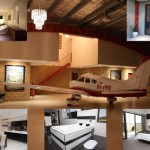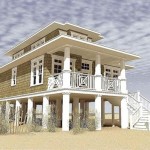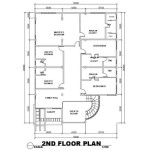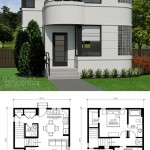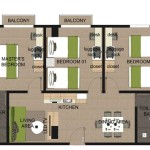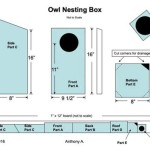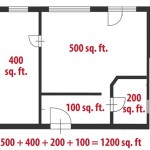Daylight Basement House Plans: A Guide To Building
Daylight basement house plans offer a unique approach to residential design, combining the advantages of a traditional basement with the benefits of natural light and direct access to the outdoors. These plans are particularly well-suited for sloping lots, allowing for the creation of functional and livable spaces below the main level. Understanding the intricacies of daylight basement design and construction is crucial for homeowners and builders seeking to maximize the potential of their property.
A daylight basement, also sometimes called a walk-out basement, is characterized by one or more walls that are fully exposed to the outside. This exposure allows for the installation of windows and doors, transforming the basement from a dark, subterranean space into an area that feels more like a ground-level living area. The integration of natural light and exterior access significantly enhances the usability and value of the lower level.
Several factors contribute to the popularity of daylight basement house plans. The added living space can be used for a variety of purposes, including family rooms, home offices, guest suites, or even rental units. The direct access to the outdoors provides a convenient connection to patios, gardens, and other outdoor amenities. Furthermore, daylight basements can improve energy efficiency by providing natural light and ventilation.
Key Considerations in Daylight Basement House Plans
Designing and building a daylight basement requires careful planning and consideration of several key factors. These include site assessment, structural design, insulation, and drainage. Each of these elements plays a crucial role in ensuring the long-term performance and functionality of the basement.
Site Assessment: The first step in planning a daylight basement is a thorough assessment of the building site. This assessment should include an evaluation of the slope, soil conditions, and drainage patterns. The slope of the lot will determine the feasibility of creating a walk-out basement and the extent to which the walls can be exposed. Soil conditions will influence the foundation design and the need for soil stabilization measures. Drainage patterns will need to be carefully managed to prevent water infiltration and potential damage to the basement structure.
Geotechnical reports are often necessary to determine the load-bearing capacity of the soil and to identify any potential hazards, such as expansive soils or groundwater. This information is essential for designing a foundation that can withstand the pressures exerted by the surrounding soil and water.
Structural Design: The structural design of a daylight basement must account for the lateral earth pressure exerted by the surrounding soil. The basement walls must be strong enough to resist this pressure and prevent inward movement or collapse. Reinforced concrete is a common material choice for basement walls due to its strength and durability. The thickness and reinforcement of the walls will depend on the height of the wall, the type of soil, and the presence of groundwater.
The foundation design must also address the potential for differential settlement. Differential settlement occurs when different parts of the foundation settle at different rates, which can lead to cracking and structural damage. To mitigate this risk, it is important to ensure that the foundation is uniformly supported and that the soil beneath the foundation is properly compacted.
Insulation: Proper insulation is essential for maintaining a comfortable and energy-efficient basement. Insulation helps to reduce heat loss in the winter and prevent heat gain in the summer. There are several types of insulation that can be used in a daylight basement, including rigid foam insulation, fiberglass batting, and spray foam insulation. Rigid foam insulation is often used on the exterior of the basement walls to provide a continuous layer of insulation and to protect the walls from moisture.
In addition to insulating the walls, it is also important to insulate the basement floor. This can be done by installing a layer of rigid foam insulation beneath the concrete slab. Insulating the floor helps to reduce heat loss through the ground and to create a more comfortable living space.
Drainage: Effective drainage is critical for preventing water infiltration and maintaining a dry basement. Water can enter the basement through cracks in the walls, through the joint between the wall and the floor, or through the ground surrounding the foundation. To prevent water infiltration, it is important to install a comprehensive drainage system that includes exterior foundation drains, interior perimeter drains, and a sump pump.
Exterior foundation drains are typically installed around the perimeter of the foundation to collect water that is seeping through the soil. These drains are usually made of perforated pipe that is surrounded by gravel. The gravel allows water to flow freely into the pipe, which then carries the water away from the foundation.
Interior perimeter drains are installed along the inside of the basement walls to collect water that is seeping through the walls. These drains are typically connected to a sump pump, which pumps the water out of the basement and away from the foundation.
Advantages of Daylight Basement House Plans
Daylight basement house plans offer several advantages over traditional basement designs. These advantages include increased living space, enhanced natural light, improved energy efficiency, and increased property value.
Increased Living Space: A daylight basement provides a significant increase in usable living space. This space can be used for a variety of purposes, such as a family room, playroom, home office, guest suite, or even a rental unit. The flexibility of a daylight basement allows homeowners to customize the space to meet their specific needs and preferences. The additional square footage can be particularly valuable in areas where land is scarce or expensive.
The open and airy feel of a daylight basement makes it a more inviting and comfortable living space than a traditional basement. The natural light and direct access to the outdoors create a connection to the surrounding environment, making the space feel more like a ground-level living area.
Enhanced Natural Light: One of the primary benefits of a daylight basement is the abundance of natural light. The large windows and doors allow sunlight to penetrate the space, creating a bright and cheerful atmosphere. Natural light can improve mood, reduce eye strain, and enhance productivity. In contrast to traditional basements, which often rely on artificial lighting, daylight basements provide a more pleasant and healthy environment.
The orientation of the windows and doors should be carefully considered to maximize the amount of natural light that enters the basement. South-facing windows will receive the most sunlight, while north-facing windows will provide more consistent, diffused light. The size and placement of the windows should also be carefully planned to ensure that the basement is adequately lit throughout the day.
Improved Energy Efficiency: Daylight basements can improve energy efficiency by providing natural light and ventilation. The natural light reduces the need for artificial lighting, which can save energy and reduce electricity bills. The direct access to the outdoors allows for natural ventilation, which can reduce the need for air conditioning.
The insulation of the basement walls and floor can also contribute to energy efficiency. Proper insulation helps to reduce heat loss in the winter and prevent heat gain in the summer, which can lower heating and cooling costs. The use of energy-efficient windows and doors can further enhance the energy performance of the basement.
Increased Property Value: A daylight basement can significantly increase the value of a home. The added living space, natural light, and direct access to the outdoors make the home more attractive to potential buyers. A well-designed and finished daylight basement can be a valuable asset that enhances the marketability and appeal of the property.
The increased property value is often due to the versatility of the space. Potential buyers appreciate the ability to use the basement for a variety of purposes, such as a home office, guest suite, or recreation room. The direct access to the outdoors also adds to the appeal of the basement, making it feel more like an integral part of the home.
Challenges in Daylight Basement Construction
While daylight basements offer numerous advantages, there are also some challenges associated with their construction. These challenges include managing water infiltration, ensuring proper ventilation, and complying with building codes.
Managing Water Infiltration: One of the biggest challenges in daylight basement construction is managing water infiltration. Because the basement is partially or fully below grade, it is susceptible to water seepage from the surrounding soil. Proper drainage and waterproofing are essential for preventing water infiltration and maintaining a dry basement.
The drainage system should include exterior foundation drains, interior perimeter drains, and a sump pump. The exterior foundation drains should be installed around the perimeter of the foundation to collect water that is seeping through the soil. The interior perimeter drains should be installed along the inside of the basement walls to collect water that is seeping through the walls. The sump pump should be used to pump the water out of the basement and away from the foundation.
Waterproofing the basement walls is also crucial for preventing water infiltration. This can be done by applying a waterproof membrane to the exterior of the walls. The membrane should be installed according to the manufacturer's instructions and should be properly sealed to prevent water from entering the basement.
Ensuring Proper Ventilation: Proper ventilation is essential for maintaining a healthy and comfortable basement. Basements are often prone to moisture buildup, which can lead to mold growth and other problems. Ventilation helps to remove moisture and to circulate fresh air throughout the space.
Natural ventilation can be achieved by opening windows and doors. However, in some cases, mechanical ventilation may be necessary to ensure adequate airflow. This can be done by installing an exhaust fan or a heat recovery ventilator (HRV).
An exhaust fan can be used to remove stale air and moisture from the basement. An HRV can be used to exchange stale indoor air with fresh outdoor air while recovering heat from the exhaust air. This can help to improve energy efficiency and to maintain a comfortable temperature in the basement.
Complying with Building Codes: Daylight basement construction must comply with all applicable building codes. These codes may include requirements for foundation design, insulation, drainage, and ventilation. It is important to work with a qualified architect or engineer to ensure that the building plans meet all code requirements.
Building codes may also specify requirements for egress, which refers to the ability to exit the basement in the event of a fire or other emergency. Egress requirements typically include the provision of a window well or a walk-out door. The size and location of the egress window or door must comply with the code requirements to ensure the safety of the occupants.
Understanding these challenges and implementing appropriate solutions is essential for successful daylight basement construction. Careful planning and attention to detail can help to ensure that the basement is dry, comfortable, and compliant with all applicable building codes.

A Guide To Sloping Lot House Plans

Daylight Basement 5 Bedroom Country Style House Plan 6518

Benefits Of House Plans With Walkout Daylight Basements

Daylight Basement Craftsman Seattle By Spokane House Plans Inc Houzz

Luxury Modern Farmhouse Style House Plan 7226 Millerville

Drive Under House Plans With Basement Garage The Designers

Mountain Mid Century Cottage Bedroom Downstairs With Walk Out Basement Cathedral Ceiling 7342

House Plan Ch501 Sloping Lot Basement Plans Mountain

Craftsman Style House Plan 4 Beds 3 Baths 2906 Sq Ft 124 1242 Eplans Com

Craftsman Style House Plan 4 Beds 3 5 Baths 2619 Sq Ft 927 Floorplans Com
Related Posts

